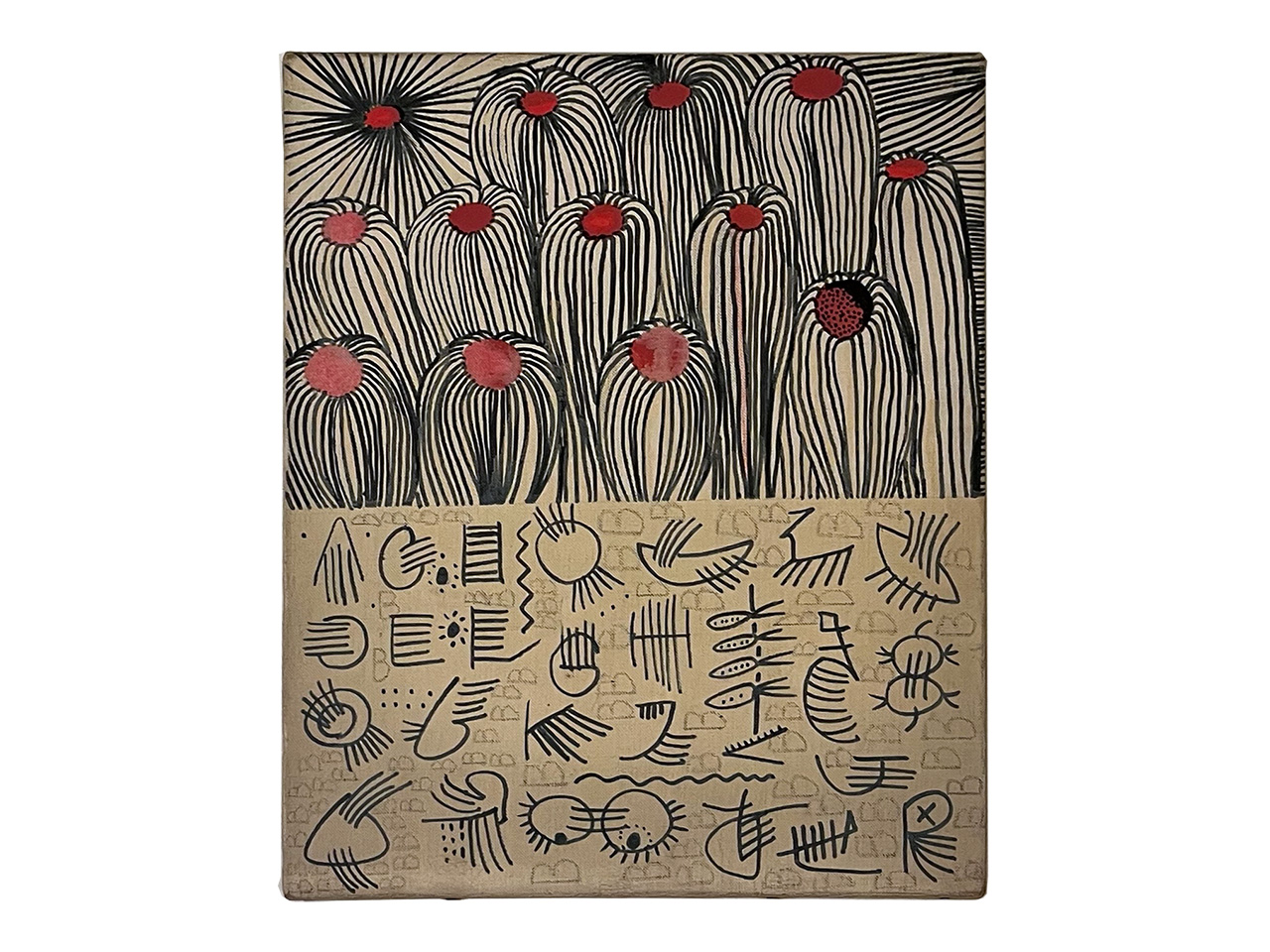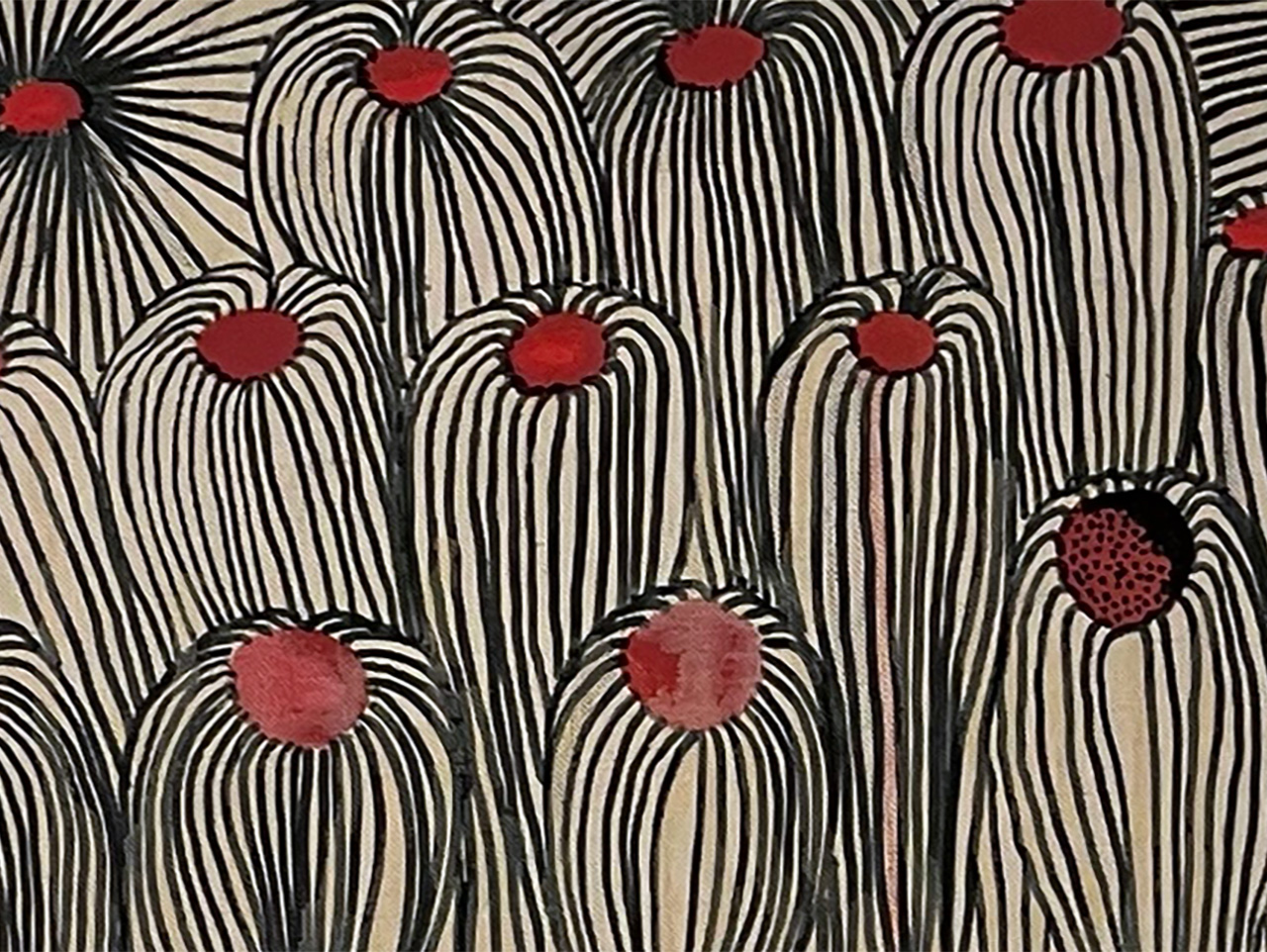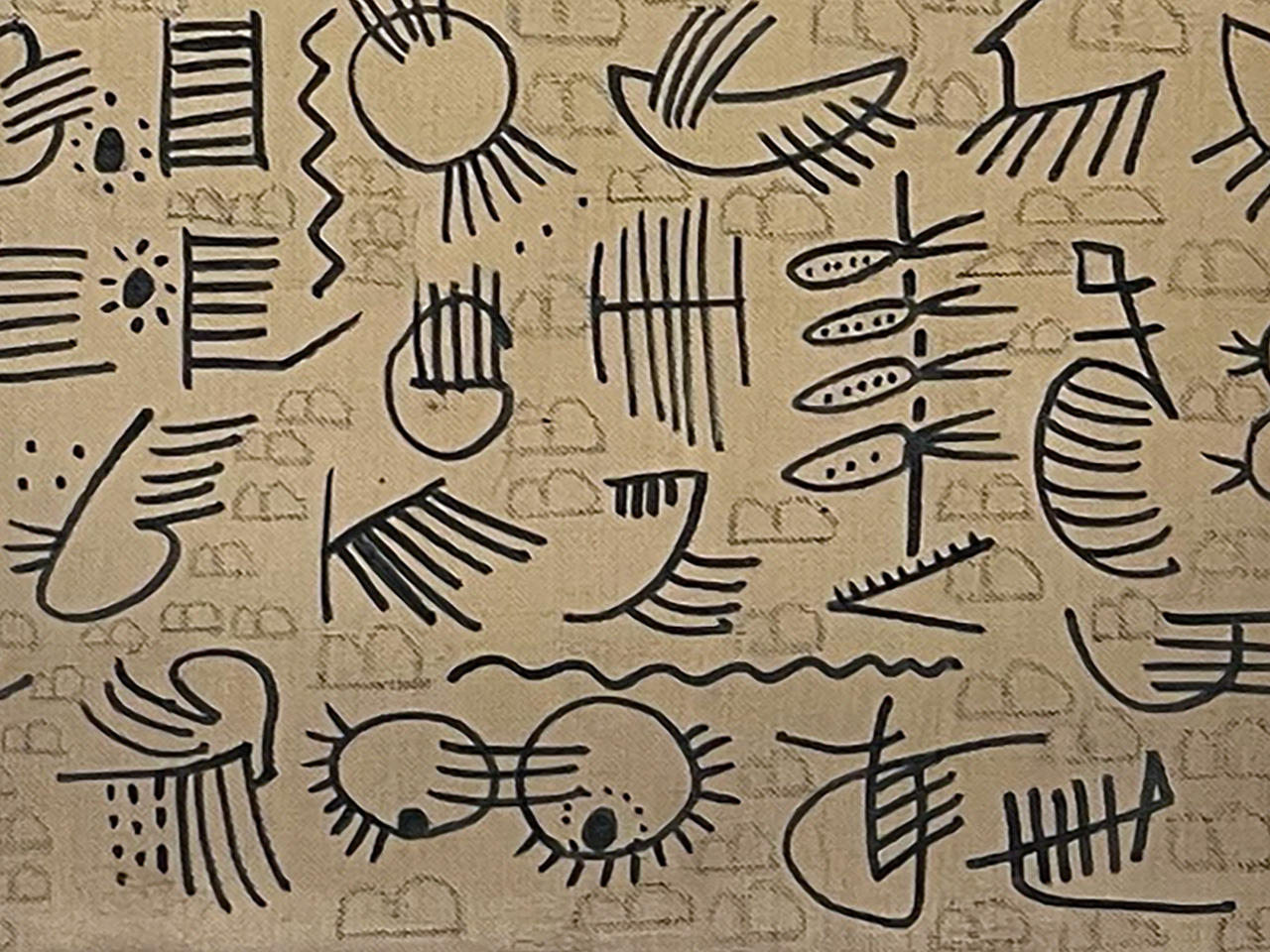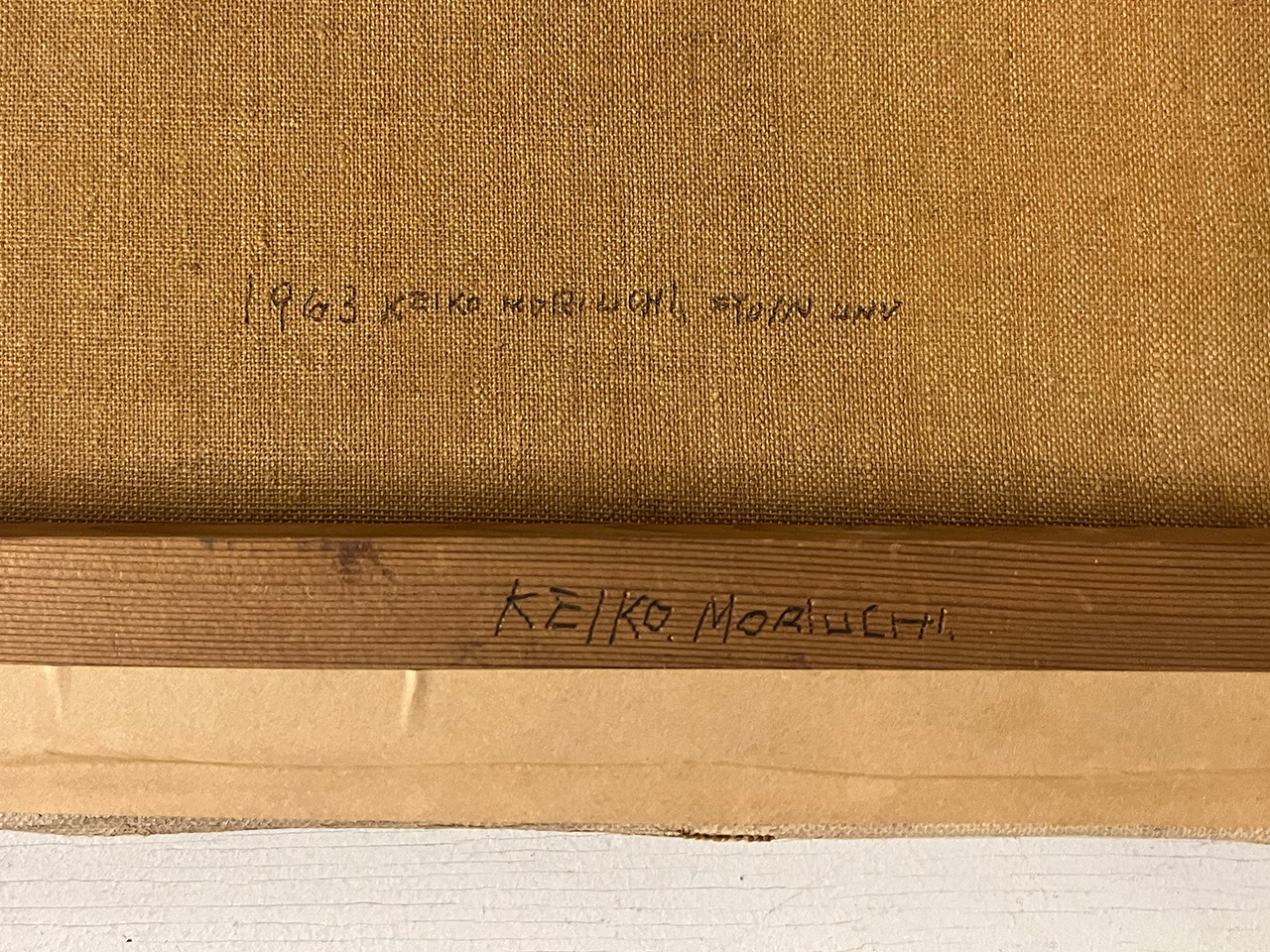森内 敬子/Moriuchi Keiko
森内敬子(1943~)は、「具体美術協会(以下、具体)」に参加していた大阪府出身の美術家です。
森内が「具体」の創設者である吉原治良(1905~1972)と出会ったのは、大阪樟蔭女子大学国文科に入学した1962年のことでした。このときパリへの留学を考えていた森内ですが、新たな美術の中心地として花開いていたニューヨークへ行くよう吉原に勧められ、1965年に渡米します。同地では、黒色で単一化された抽象画のシリーズ「ブラック・ペインティング」などで知られるアド・ラインハート(1913~1967)が住むビルの一室を住居兼アトリエとし、創作に励みました。このラインハートをはじめ、20世紀を代表する彫刻家のイサム・ノグチ(1904~1988)や、抽象表現主義の旗手として活躍していた金光松美(1922~1992)らと交流を深め、その斬新さや個性から大いに刺激を受けながら自身の芸術を確立させていきます。なお、森内はこの渡米前に、当時の前衛芸術家たちが集っていた新橋の内科画廊で個展を開催しており、若くしてすでに注目を集めていたことが窺えます。
帰国後、1968年に「具体」に加入し、グループが解散する1972年まで在籍し続けました。入会のきっかけとなる新人展では、108個の白い座布団を一列に並べた前衛的な作品を発表しています。白をひたすら反復させた本作品は、メタファーや装飾を極限まで排したミニマル・アートを思わせる一方で、「108」という数字が仏教における煩悩の数を示唆しているようにも考えられます。また、白い座布団が整然と長蛇の列をなしている光景には梯子などのモチーフを見出すこともでき、作品は無意味と意味の狭間で揺れながら、鑑賞者に想像の余地を与えます。ちなみに、同じく「具体」に所属していた高﨑元尚(1923~)による、無数のキャンバス片からなるタイル張りのような作品【装置66-3】(1966年)でも白の反復が試みられています。1983年からはドイツのアーヘンにて、パーソナルコンピューターが登場して以降の人間の意識やエネルギーについて学ぶとともに、国内外で個展やグループ展を開催するなど、芸術的関心と活動の場をさらに押し広げていきました。現在も芸術への飽くなき挑戦を続け、宇宙や曼荼羅を彷彿とさせるカラフルで装飾的な作品を意欲的に制作しています。
Keiko Moriuchi (1943~) is an artist from Osaka Prefecture who participated in the “Gutai Art Association (hereinafter referred to as Gutai)”.
Moriuchi first encountered the founder of Gutai, Jiro Yoshihara (1905-1972), when she entered the Department of Japanese Literature at Osaka Shoin Women’s University in 1962. At this time, Moriuchi, who had been considering studying abroad in Paris, was encouraged by Yoshihara to go to New York, which was flourishing as a new center of art. In 1965, she moved to the United States. She resided in a room in a building where Ad Reinhardt (1913-1967), known for his series of abstract paintings called “black painting”, lived, using it as both a residence and a studio to pursue her creative endeavors. Including Reinhardt, she deepened her exchanges with renowned sculptors of the 20th century such as Isamu Noguchi (1904-1988) and Matsumi Kanemitsu (1922-1992), who was active as a leading figure of abstract expressionism, drawing great inspiration from their innovation and individuality as she established her own artistic path. Before she moved to the United States, she had already held a solo exhibition at the NAIQUA GALLERY in Shinbashi, where avant-garde artists gathered, indicating that she had already attracted attention at a young age.
Upon returning to Japan, she joined Gutai in 1968 and remained a member until the group disbanded in 1972. For her debut in the group’s Newcomer Exhibition, she presented an avant-garde work consisting of 108 white cushions lined up in a row. This work, which repeats the color white relentlessly, evokes minimalist art by eliminating metaphors and decorations to the utmost, while also suggesting the number “108” symbolizing the number of earthly desires in Buddhism. Additionally, the sight of the orderly rows of white cushions can also be interpreted to reveal motifs such as ladders, leaving room for imagination and interpretation between meaninglessness and meaning for the viewer. Incidentally, a similar attempt at repetition of white is seen in the work “Apparatus 66-3 “(1966) by Motonao Takasaki (1923~), who was also a member of Gutai, featuring numerous canvas fragments arranged like tiles. From 1983 onwards, she broadened her artistic interests and activities by studying human consciousness and energy following the emergence of personal computers in Aachen, Germany, and holding solo and group exhibitions domestically and internationally. She continues her relentless pursuit of artistic challenges, eagerly creating colorful and decorative works reminiscent of the universe and mandalas.




作品名:無題
サイズ:6号(1963年 キャンバスに油彩)
価格:300,000円
価格は税抜き表示です

